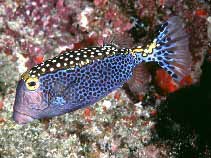Related Research Articles

The turkey is a large bird in the genus Meleagris, which is native to the Americas. The genus has two extant species: the wild turkey of North America and the ocellated turkey. Males of both turkey species have a distinctive fleshy wattle or protuberance that hangs from the top of the beak. They are among the largest birds in their ranges. As in many galliformes, the male is larger and much more colorful than the female.

Fritillaria (fritillaries) is a genus of spring flowering herbaceous bulbous perennial plants in the lily family (Liliaceae). The type species, Fritillaria meleagris, was first described in Europe in 1571, while other species from the Middle East and Asia were also introduced to Europe at that time. The genus has about 130–140 species divided among eight subgenera. The flowers are usually solitary, nodding and bell-shaped with bulbs that have fleshy scales, resembling those of lilies. They are known for their large genome size and genetically are very closely related to lilies. They are native to the temperate regions of the Northern hemisphere, from the Mediterranean and North Africa through Eurasia and southwest Asia to western North America. Many are endangered due to enthusiastic picking. The name Fritillaria is thought to refer to the checkered pattern of F. meleagris, resembling a box in which dice were carried. Fritillaries are commercially important in horticulture as ornamental garden plants and also in traditional Chinese medicine, which is also endangering some species. Fritillaria flowers have been popular subjects for artists to depict and as emblems of regions and organizations.

The helmeted guineafowl is the best known of the guineafowl bird family, Numididae, and the only member of the genus Numida. It is native to Africa, mainly south of the Sahara, and has been widely introduced into the West Indies, Brazil, Australia and Europe.

Fritillaria meleagris is a Eurasian species of flowering plant in the lily family. Its common names include snake's head fritillary, snake's head, chess flower, frog-cup, guinea-hen flower, guinea flower, leper lily, Lazarus bell, chequered lily, chequered daffodil, drooping tulip or, in northern Europe, simply fritillary.

Meleagridinae is a subfamily of birds in the family Phasianidae. It includes turkeys and their extinct relatives.

The Narragansett turkey is a breed of Meleagris gallopavo which descends from a cross between the eastern wild turkey and the domestic turkey. According to the American Livestock Breeds Conservancy, the Narragansett turkey is a "historic variety, unique to North America" and is named for Narragansett Bay.

Arothron meleagris, commonly known as the guineafowl puffer or golden puffer, is a pufferfish from the Indo-Pacific, and Eastern Pacific. It is occasionally harvested for the aquarium trade. It reaches 50 cm in length.

Masdevallia meleagris is a species of orchid endemic to Colombia.

Echinolittorina meleagris is a species of small sea snail, a marine gastropod mollusk in the family Littorinidae, the winkles or periwinkles.

Ostracion meleagris, the White-spotted boxfish, is a species of boxfish found in the Indian and Pacific Oceans. It is found on reefs at depths of from 1 to 30 metres. This species grows to a length of 25 centimetres (9.8 in) TL. Males and females differ in colour: males are blackish on the back with white spots, and have bluish sides with bright yellowish bands and spots. Females and juveniles are dark brown to blackish with white spots.
Eunidiini is a tribe of longhorn beetles of the subfamily Lamiinae. It was described by Téocchi et al. in 2010.
Eunidia is a genus of longhorn beetles of the subfamily Lamiinae.
Eunidia fallaciosa is a species of beetle in the family Cerambycidae. It was described by Stephan von Breuning in 1939. It is known from Somalia.
Eunidia rufescens is a species of beetle in the family Cerambycidae. It was described by Breuning in 1939. It is known from Mozambique, Kenya, and South Africa. It contains the varietas Eunidia rufescens var. holatripes.
Eunidia subannulicornis is a species of beetle in the family Cerambycidae. It was described by Stephan von Breuning in 1968.
Eunidia brunneopunctata is a species of beetle in the family Cerambycidae. It was described by Per Olof Christopher Aurivillius in 1911. It is known from South Africa, Malawi, Angola, Kenya, Ethiopia, Mozambique, Botswana, Sudan, Namibia, Senegal, the Democratic Republic of the Congo, Tanzania, Somalia, and Uganda.
Eunidia kristenseni is a species of beetle in the family Cerambycidae. It was described by Per Olof Christopher Aurivillius in 1911. It is known from tropical Africa.
Eunidia subtesselata is a species of beetle in the family Cerambycidae. It was described by Charles Joseph Gahan in 1909. It is known from Kenya, Ethiopia, and Somalia.
Eunidia batesi is a species of beetle in the family Cerambycidae. It was described by Olliff in 1889.
Eunidia caffra is a species of beetle in the family Cerambycidae. It was described by Fahraeus in 1872.
References
- ↑ BioLib.cz - Eunidia meleagris. Retrieved on 8 September 2014.
| This Eunidiini article is a stub. You can help Wikipedia by expanding it. |